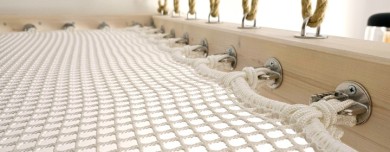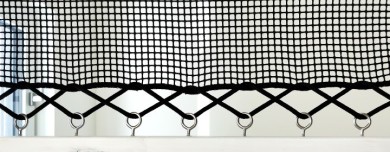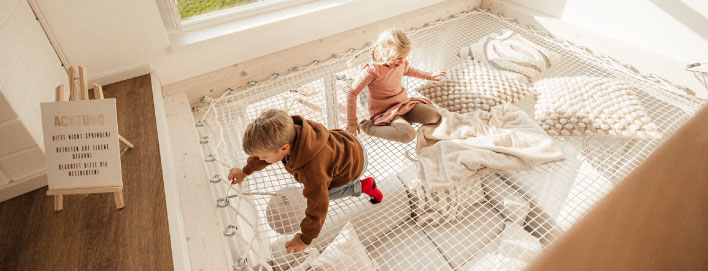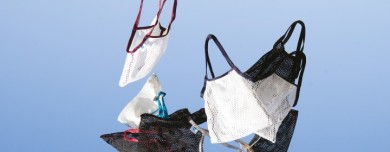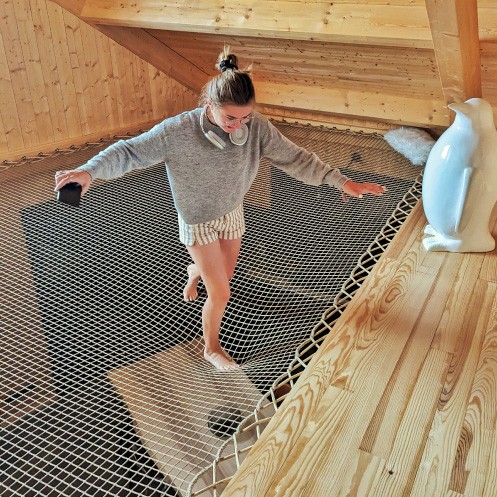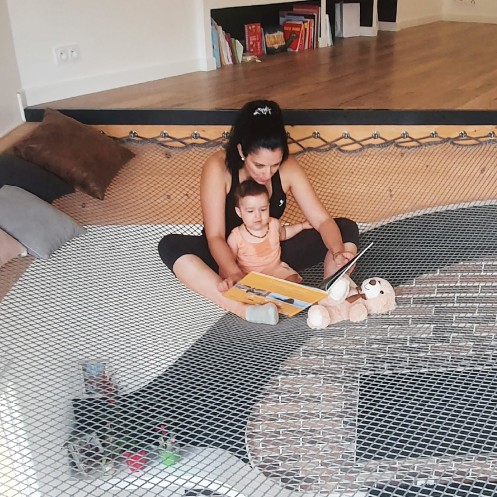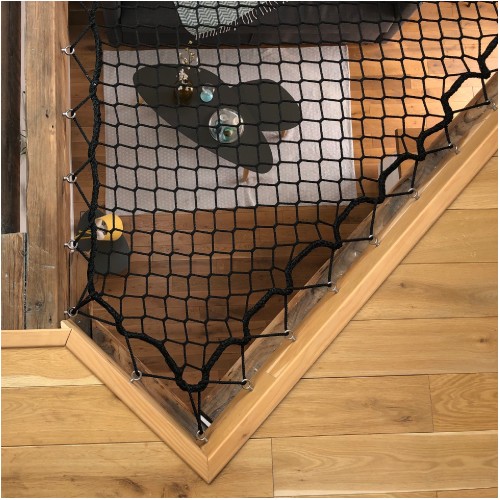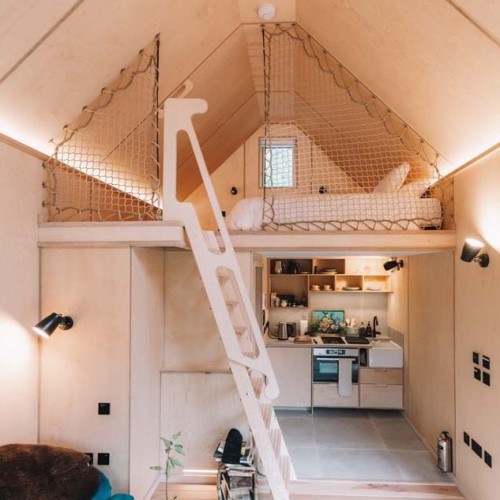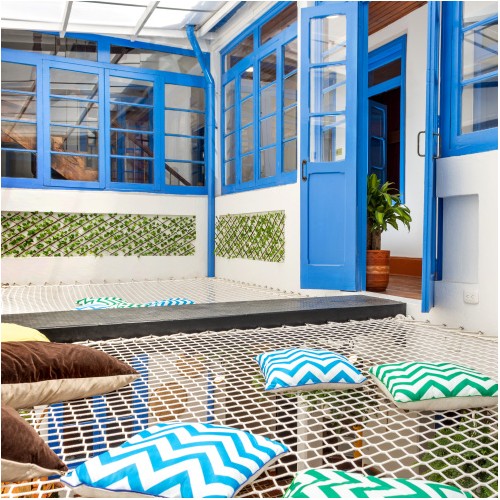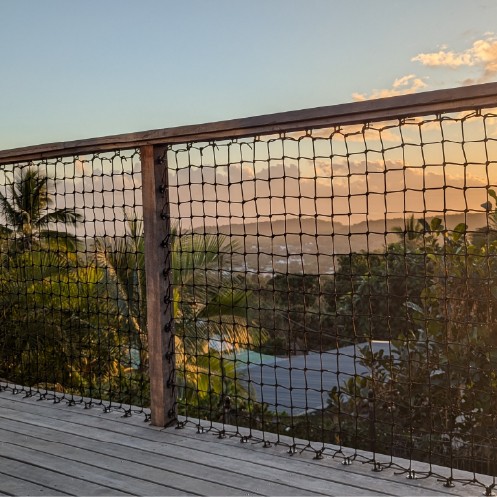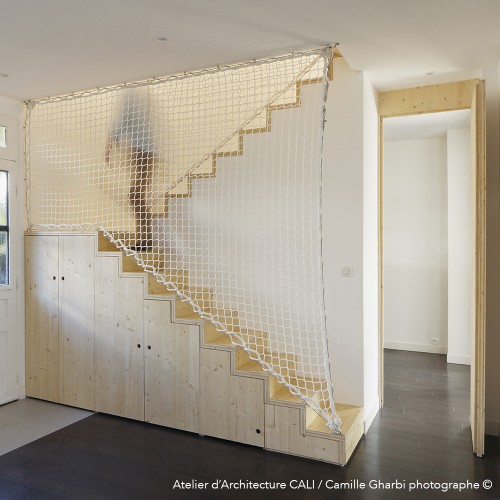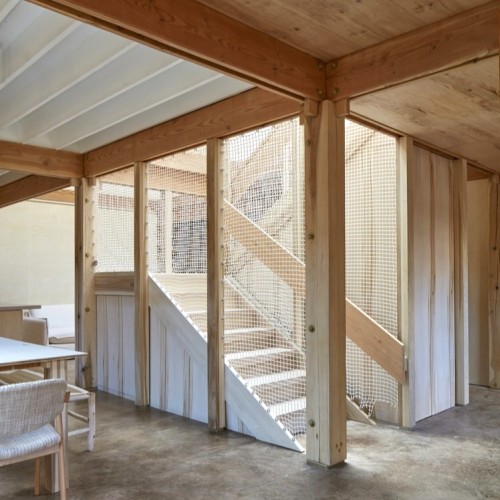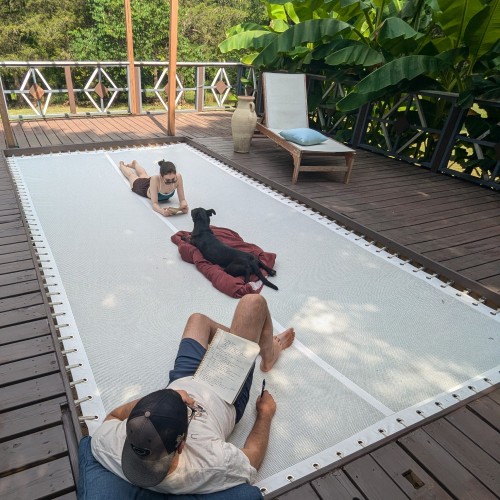Each material has its own characteristics. To help you decide, we have created a guide comparing our different home net materials and meshes.
Our multi-purpose, custom-made home and catamaran nets can be made from various materials in different shapes depending on how they will be used.
LOFTNETS net material comparison
Whether braided or knotted, LOFTNETS offers several types of net material for your home, from our exclusive Marine 3S® polyester mesh, polypropylene, polyamide, Dyneema® and coated polyester.
Use the table below to compare our braided, knotted and technical materials and learn about their different technical characteristics:
-
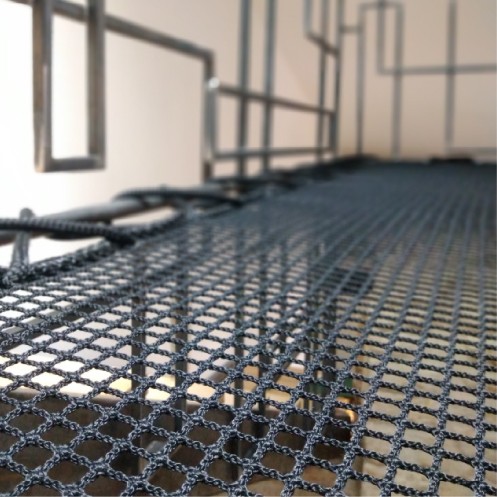 Marine 3S® polyester
Marine 3S® polyester
- High-tenacity material
- Mesh: braided
- Net position: horizontal
- Load capacity:
- Comfort:
- UV and water resistance:
- Price:
- High-tenacity material
-
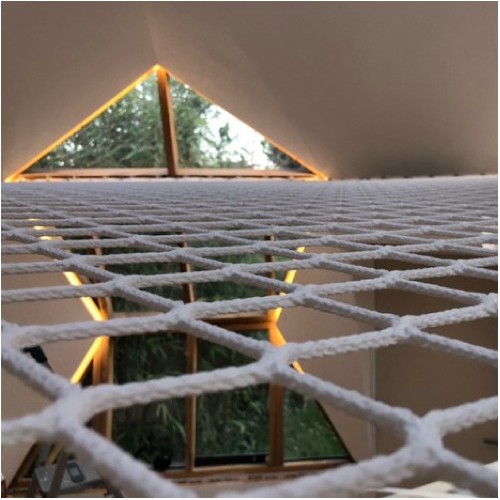 Polypropylene
Polypropylene
- Lightweight material
- Mesh: braided
- Net position: horizontal
- Load capacity:
- Comfort:
- UV and water resistance:
- Price:
- Lightweight material
-
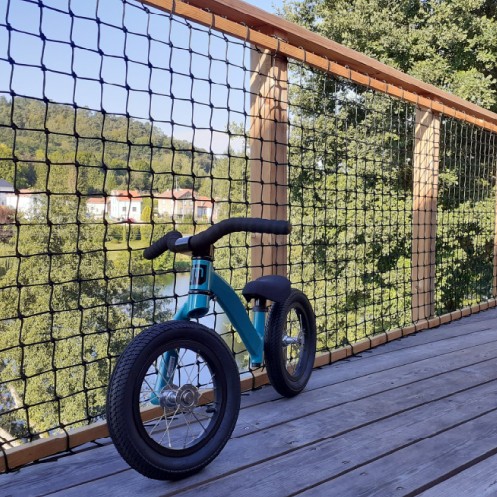 Polyamide
Polyamide
- Flexible material
- Mesh: knotted
- Net position: vertical
- Load capacity:
- Comfort:
- UV and water resistance:
- Price:
- Flexible material
-
 Technical mesh
Technical mesh
- Coated polyester
- Mesh: heat-sealed
- Net position: horizontal
- Load capacity:
- Comfort:
- UV and water resistance:
- Price:
- Coated polyester
-
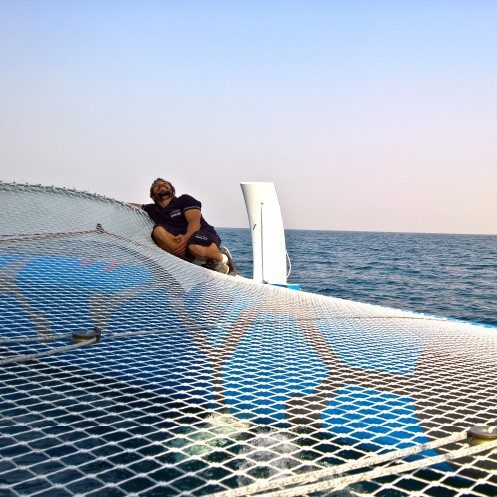 Dyneema®
Dyneema®
- Very high resistance
- Mesh: braided
- Net position: horizontal
- Load capacity:
- Comfort:
- UV and water resistance:
- Price:
- Very high resistance
Braided and knotted mesh materials
Marine 3S® polyester
Polyester’s background and origins make it the go-to material for catamaran trampolines. It is without a doubt the most commonly used fibre for sailing ropes. It stretches much less than a polyamide net, making it ideal for frequent use.
More resistant and less elastic than a standard polyester, LOFTNETS’ Marine 3S® polyester was named in reference to its technical characteristics: ‘marine’ refers to its impressive resistance to wind, sun and salt, and ‘3S’ to the three Ss: Strong, Soft and Sunproof.
High-tenacity polyester offers a number of benefits, including a lower stretch factor than standard polyester, meaning it will stretch very little when used. It is the ideal material for static uses such as home nets. Thanks to a special heat-setting process, it can tolerate high UV exposure and is resistant to seawater. LOFTNETS uses this versatility indoors and outdoors, adapting it to both horizontal and vertical applications.
- Advantages: Low stretch factor, very comfortable, high resistance to UV and seawater
- Drawbacks: More expensive than standard polyester
Polypropylene
A very lightweight material, perfect for mooring lines. While polypropylene is a low-cost material, it is less resistant to UV and abrasion than polyester.
- Advantages: Lightweight, low-cost
- Drawbacks: Absorbs water
Polyamide knotted mesh
With a 15-20% stretch factor depending on the fibre quality, polyamide has a higher elasticity than polyester, offering it a high shock absorption capacity and resistance to occasional overloading. These properties make polyamide an excellent material for vertical ropes and nets. It offers good resistance to friction and moderate UV resistance. It is also far more flexible than polyester and contains knots that can be uncomfortable once stretched out, which is why LOFTNETS recommends it for vertical uses.
- Advantages: Low-cost, ideal for vertical uses
- Drawbacks: Too high elasticity for horizontal uses, absorbs water
Technical canvases
This PVC-coated polyester canvas offers exceptional abrasion resistance and is used in the sailing and construction industries (roofs, façades, etc.). It is available for customers who would like an alternative finish to a traditional net mesh.
LOFTNETS also uses this material for projects with high technical constraints, such as public-access buildings, as it offers excellent durability and good fire-resistance (M1).
- Advantages: Very high resistance, excellent durability
- Drawbacks: Heavy and high-cost
Dyneema®
Dyneema® is a high-density polyethylene with a very high resistance to abrasion, tearing and UV. It is notably used to manufacture anti-ballistic protection equipment for military vehicles, helmets, bulletproof vests and cut-resistant gloves. Due to its high molecular mass, it is a very rigid material. It is notably used for offshore racing multihulls and hydrofoil catamarans.
- Advantages: Four times more resistant than a polyester net of the same diameter, ultra-durable
- Drawbacks: High-cost


